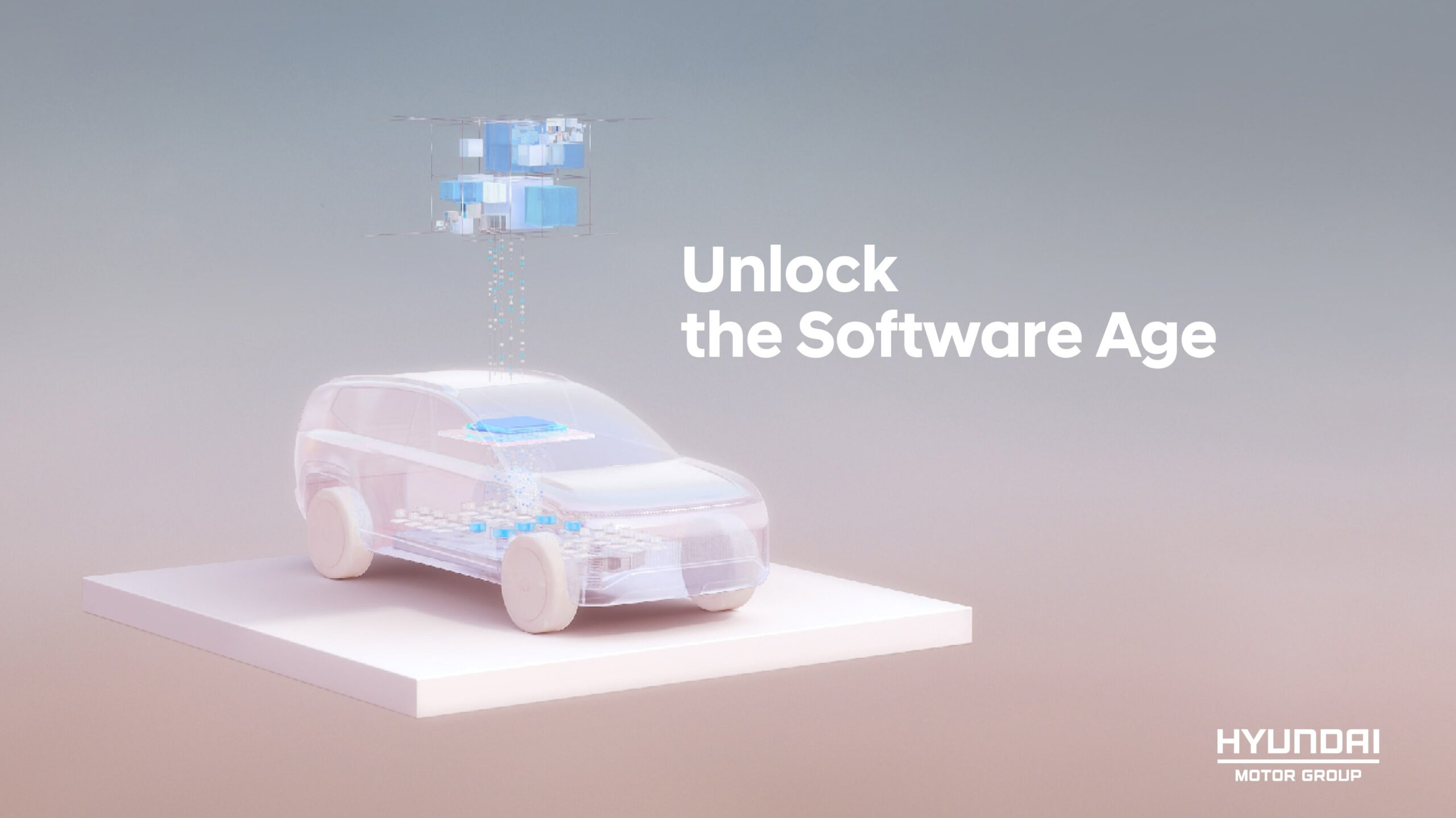Hyundai is putting a lot of stock on the Ioniq 6 as a banner electric vehicle for the company, suggesting it will roll off assembly lines as one of the industry’s best options in 2023.
That could be true, though you can expect a certain exclusivity resulting from the limited supply of 2,500 currently earmarked for the Canadian market. Except for Tesla, Hyundai sold more EVs in Canada in 2022 than any other automaker, largely spearheaded by the Ioniq 5 and Kona EV.

Indeed, the company sees the Tesla Model 3 and Polestar 2 as the biggest competitors for the Ioniq 6 going forward.
I got to test drive it myself in and around Vancouver, where I was given the Preferred AWD trim with Ultimate Package, meaning I pretty much had all the trappings the Ioniq 6 can offer. As backlogged as Hyundai already is to fulfill orders for its predecessor, it says it’s committing to bringing the new EV to the Canadian market as of April 2023.
The details
Hyundai will release the Ioniq 6 in three trims. Here’s the breakdown for range based on estimates coming from both Hyundai and Natural Resources Canada, as well as confirmed pricing:
These ranges are purely estimates that don’t account for the variables involved with EVs, like cold weather and city versus highway driving, for example. The Ioniq 6 can handle 800V charging from 350 kW chargers, which could theoretically charge the battery from 10-80 percent in 18 minutes. If you’ve got a 240V charger at home, you can expect a full charge to take about seven hours. That’s pretty good when keeping it plugged in overnight.
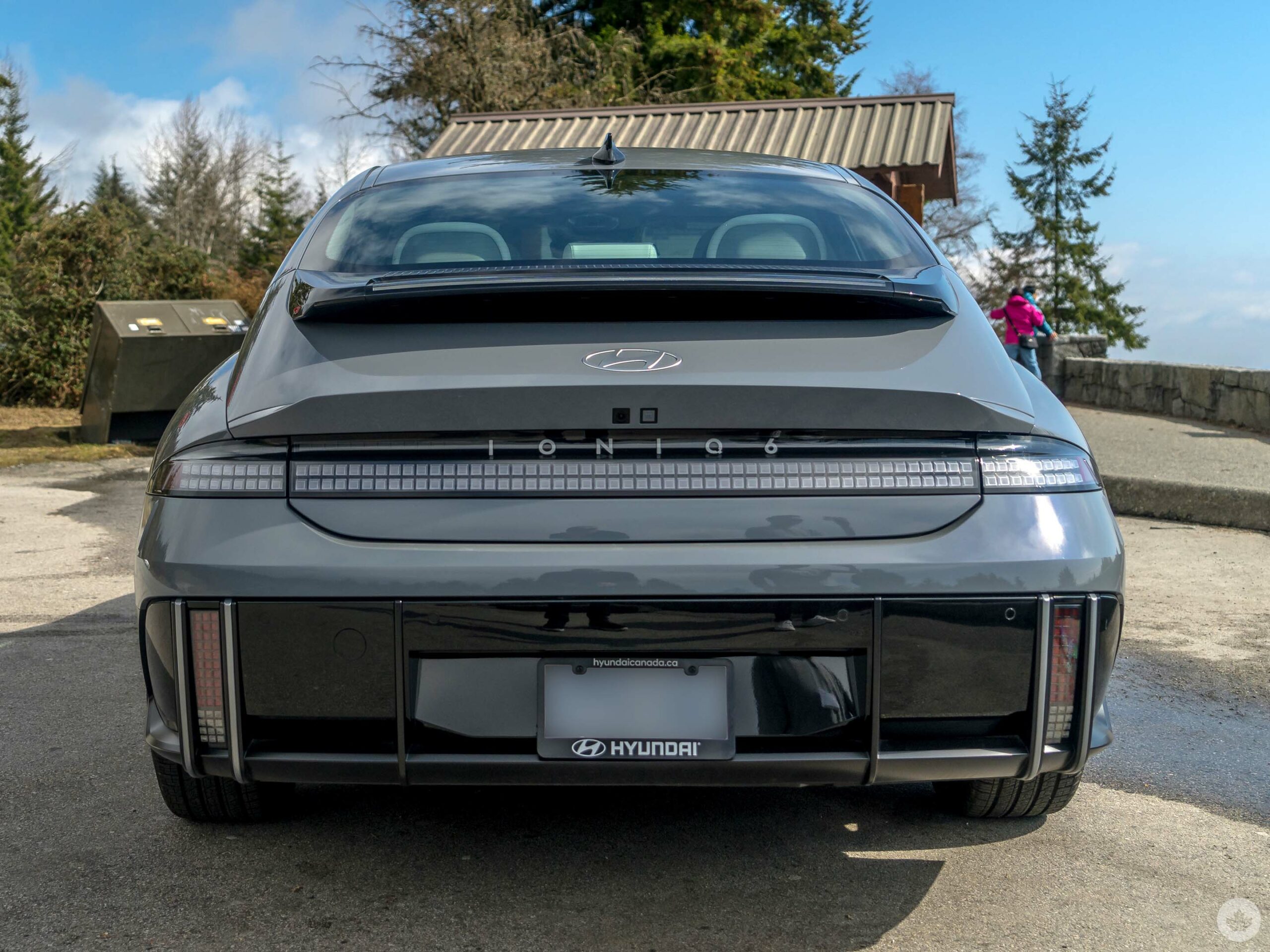
This may also depend on the trim because the Preferred RWD model is rear-wheel drive only, meaning it runs on one motor instead of the two the AWD (all-wheel drive) models have as part of Hyundai’s Electric-Global Modular Platform (E-GMP). Hence, it has a longer range than its dual-motor counterparts. Horsepower ranges from 225 to 320 depending on the trim, the fastest of which can go from zero-to-100 in 5.1 seconds.
Regenerative braking also applies here, courtesy of the paddles flanking the steering wheel. You can shift the paddles between four levels, the last of which is i-Pedal, where you can fully stop the vehicle using the accelerator pedal. Smart Regenerative System (SRS) 2.0 uses the car’s radar detection to automatically adjust the regen coasting itself, thus helping draw back some power towards the battery.
While I found it easy to switch between them, I wasn’t driving long enough to get a good feel for how well they work.
- Preferred RWD Long Range (18-inch wheels) (581km range): $54,999
- Preferred AWD long Range (18-inch wheels) (509km range): $57,999
- Preferred AWD Long Range Ultimate Pkg (20-inch wheels) (435km range): $63,999
- Freight and PDI: $1,925
Interior and connectivity
Being a sedan, the Ioniq 6’s chassis and structural design make some room in the interior that I personally found comfortable as a tall person, albeit with a few adjustments, like lowering the seat because the roof was a bit too close to the top of my head. I even sat in the back for a short distance and found it roomier than I would’ve expected. This is partly because of a slightly longer body, including a longer overhang in the rear to also make extra room for the motor, and give the vehicle a lower centre of gravity for improved cornering and aerodynamics. More impressive is the amount of trunk space, which is larger than I expected, given the overall design of the EV.
To some degree, Hyundai went with a fairly minimalist approach in the Ioniq 6’s layout, though it’s not like that of a Tesla. Both the instrument cluster and infotainment screen have identical 12.3-inch displays, with mostly touch-sensitive buttons below for climate control, and mercifully, there’s a knob to control audio volume, similar to the Ioniq 5. You’ll find the physical buttons on the steering wheel to access various features.

The centre console includes a Qi wireless charging pad, good-sized cup holders and decent cargo space, including an undercarriage that is super useful for keeping things safe and out of sight for a cleaner look inside. For me, it was odd to see window controls in the centre console instead of on the door, especially considering the speaker grilles are arguably larger than they need to be.
Both CarPlay and Android Auto are available to use, except for one big caveat — no wireless connectivity. I had to plug in via USB to get either platform running, and the reason why is that Hyundai includes its own factory navigation. Reps told me that Apple and Google tend not to like that, and so, there’s no wireless CarPlay or Android Auto. Thankfully, there are workarounds.
The screens, infotainment system, charging pad, and indoor LED accent lights come standard across all trims. Where things change between them is in the interior fabrics, sound system and other design or functional elements.
I didn’t get the chance to try the Bluelink app, but it serves the same purpose it already does on other Hyundai EVs, like seeing current battery status, scheduled charging, remote climate control and locating nearby charging stations.
Don’t call it ‘autonomous’
Hyundai resists using the word “autonomous” to describe its driver assistance system. If you’ve driven other Hyundai models, particularly those with Highway Driving Assist (HDA), you know it as a system that works to keep a vehicle centred in its lane. Adaptive cruise control (including stop-and-go traffic) maintains speed relative to an assigned distance from other vehicles in front. This is Level 2 semi-autonomous technology, and it generally works well enough to really trust it if you’re not reckless.
The Ioniq 6 has HDA 2, which uses lane-keeping assist with adaptive cruise control and collision avoidance. Green icons on the instrument cluster indicate when they’re active. If both the steering wheel and lane lines are green, the car will stay in its lane on its own. If the left and right arrows next to them also turn green, then lane change assist can kick in by pulling the signal light switch halfway for a few seconds before it moves over. Sensors in the blind spot will look out for vehicles that are too close, and when it works, the lane change is smooth. Still, I had to keep my eyes open because the sensors can’t always tell when another vehicle is coming up fast until it’s within range of the sensors.
Hyundai also says machine learning will learn a driver’s tendencies to adapt to how they typically accelerate and coast when other vehicles are in front. I never got to see this in action, so it’s unclear how effective it is.
Unlike other similar systems, Hyundai’s wants you to touch the steering wheel at all times, so that you can override it anytime you want. Without in-cabin cameras facing me as the driver, I had nothing within the system to keep me honest on whether I was actually looking at the road. After 10 seconds without touching the steering wheel, a warning appeared on the cluster, followed by an audible tone that sounded for 60 seconds before all of the HDA 2 features disengaged and forced me to take over.
Mind you, the steering wheel’s sensors don’t respond based on the heat from hands, but rather the pressure applied by fingers or a palm. That’s why I fooled it when leaving my hands free and pressing my knee against it instead. I suspect it may even be possible to literally strap and tighten something around it to achieve the same result. It was also a little jarring to see the car’s assisted driving work (with my hands on the wheel) when I averted my eyes from the road for more than 10 seconds. It was a reminder of how GM’s Super Cruise acts up under similar circumstances.
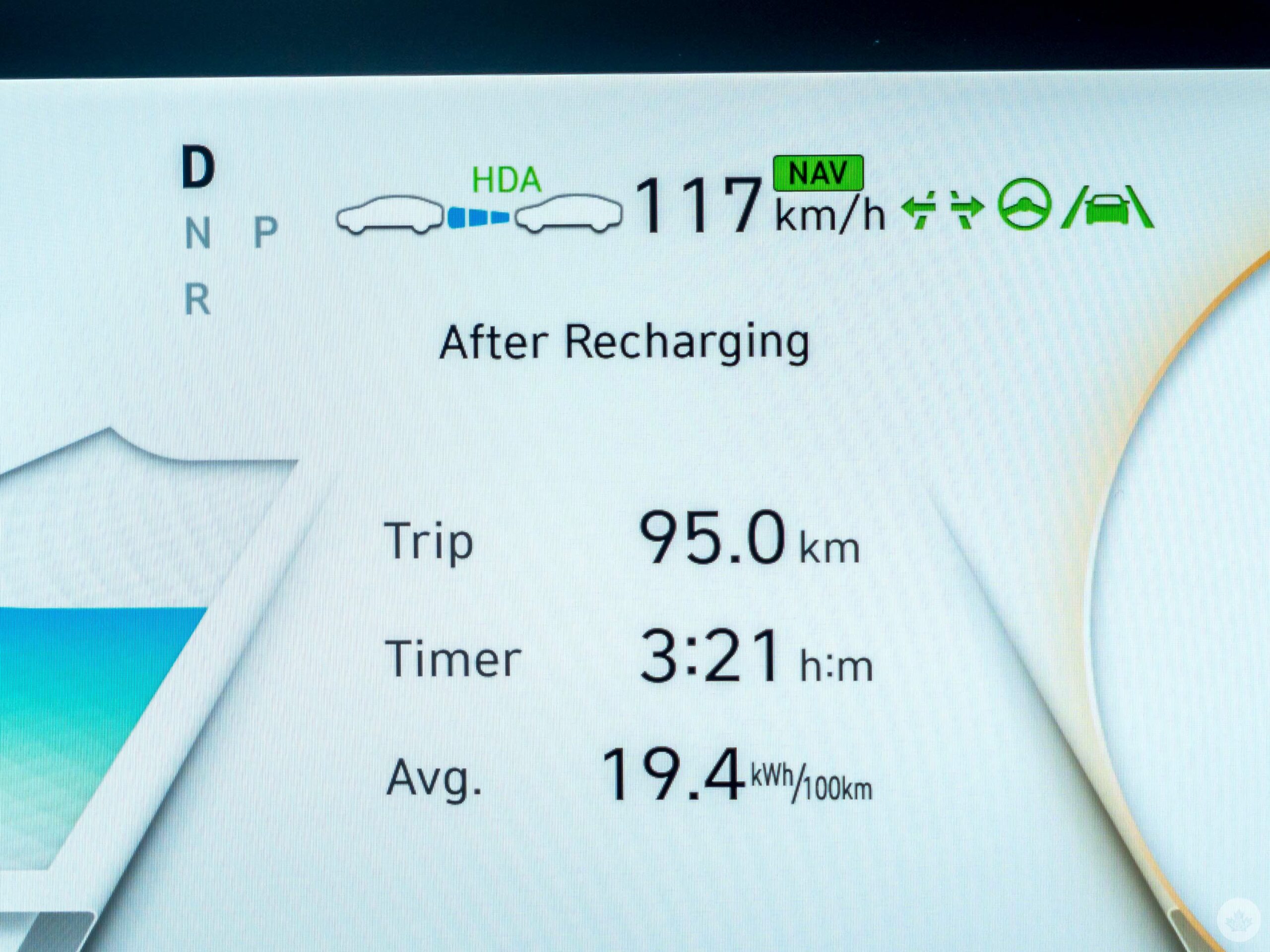
HDA 2, much like its name implies, is most useful on highways. Onboard cameras will look for lane markings on all roads, but I found it could get easily confused with forks and no markings on side roads where there was only one line. It can only kick in at 60 km/h, thus doing nothing when driving slower.
Driving around
Hyundai found ways to optimize performance while on the road, like disconnecting the front motor from the rear one in certain cases. For example, Eco mode only drives in RWD, even if it is one of the AWD trims. In Normal mode, it will only tap into the front motor (on the AWD trims) upon acceleration, then disconnect it to let the rear motor run on its own. Sport mode uses both at all times, made all the more evident by the extra torque and tighter cornering when driving with it on. You lose more battery life in Sport, but I found it the best way to gauge how well the Ioniq 6 handles itself.
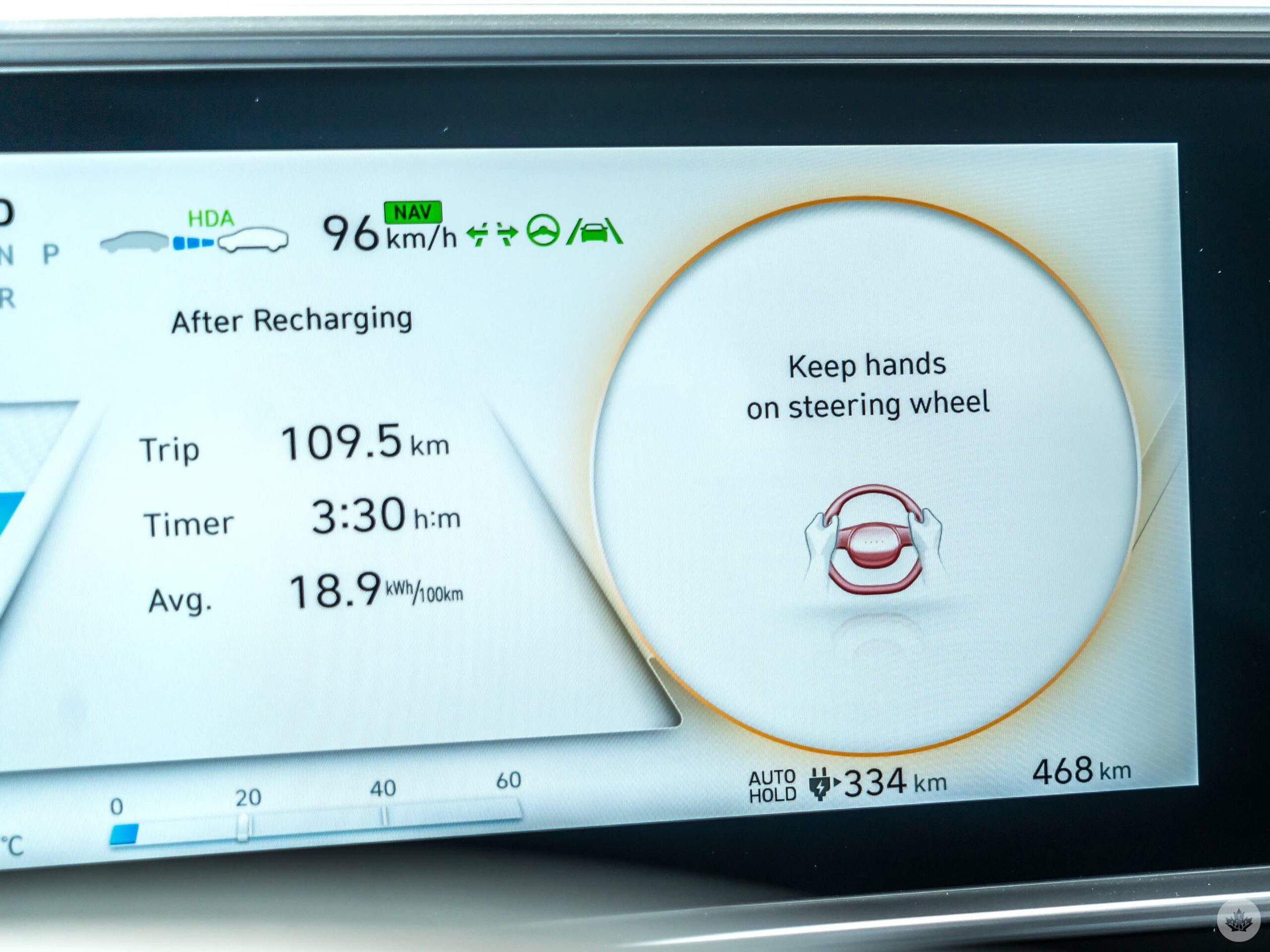
Smooth, sturdy and quiet, it was easy to appreciate driving this car. Its level of comfort and elegance inside also suggests to me it won’t feel as tiring on a road trip. The range is certainly good enough, give or take distance and weather conditions. Driving it for only one day is hard to draw lasting conclusions, but I liked my experience with the Ioniq 6.
Ready to roll
The Ioniq 6 RWD trim is eligible for the federal government’s iZEV rebate program based on the current $55,000 limit, though the AWD models may still qualify under a provision that raises the limit to $65,000 for higher trims. That would cut the price down by $5,000 unless you lease the car, which prorates the rebate based on how long the lease is.
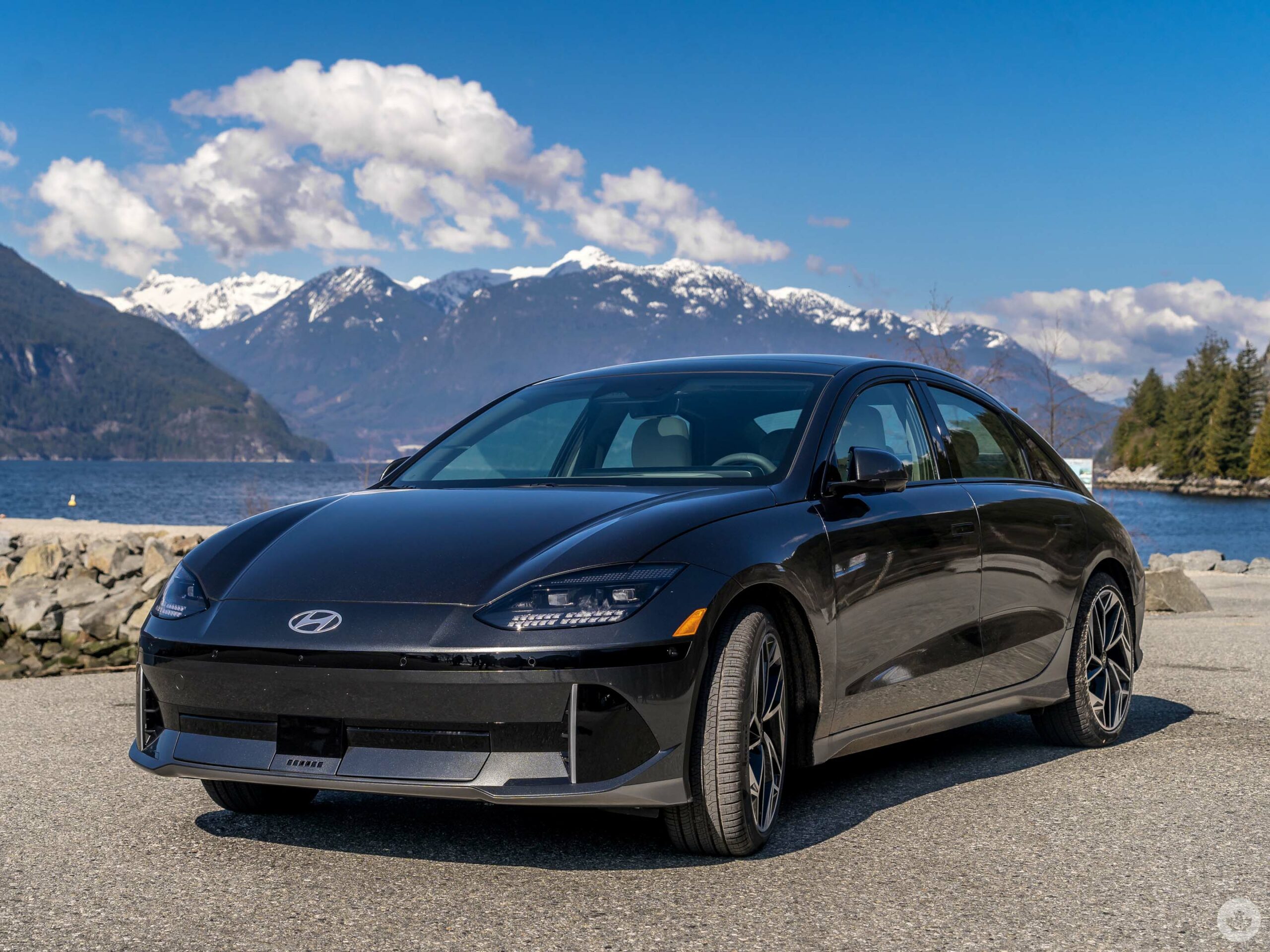
If you live in a province with its own rebate program, you could also cut the price down further that way. Hyundai dealerships should receive the first units as early as April 2023, starting with the AWD Preferred and Ultimate Package. There will be six colours to choose from: ultimate red and nocturne grey in a metallic finish, serenity white, transmission blue and abyss black in a pearl finish, and digital green in a matte finish.
A recent price cut from Tesla also made the Model 3 eligible for the same rebate, making its pricing very competitive relative to the higher-trim Ioniq 6 models. Either way, this is a statement EV for Hyundai, one that it will push hard as one of the best available.


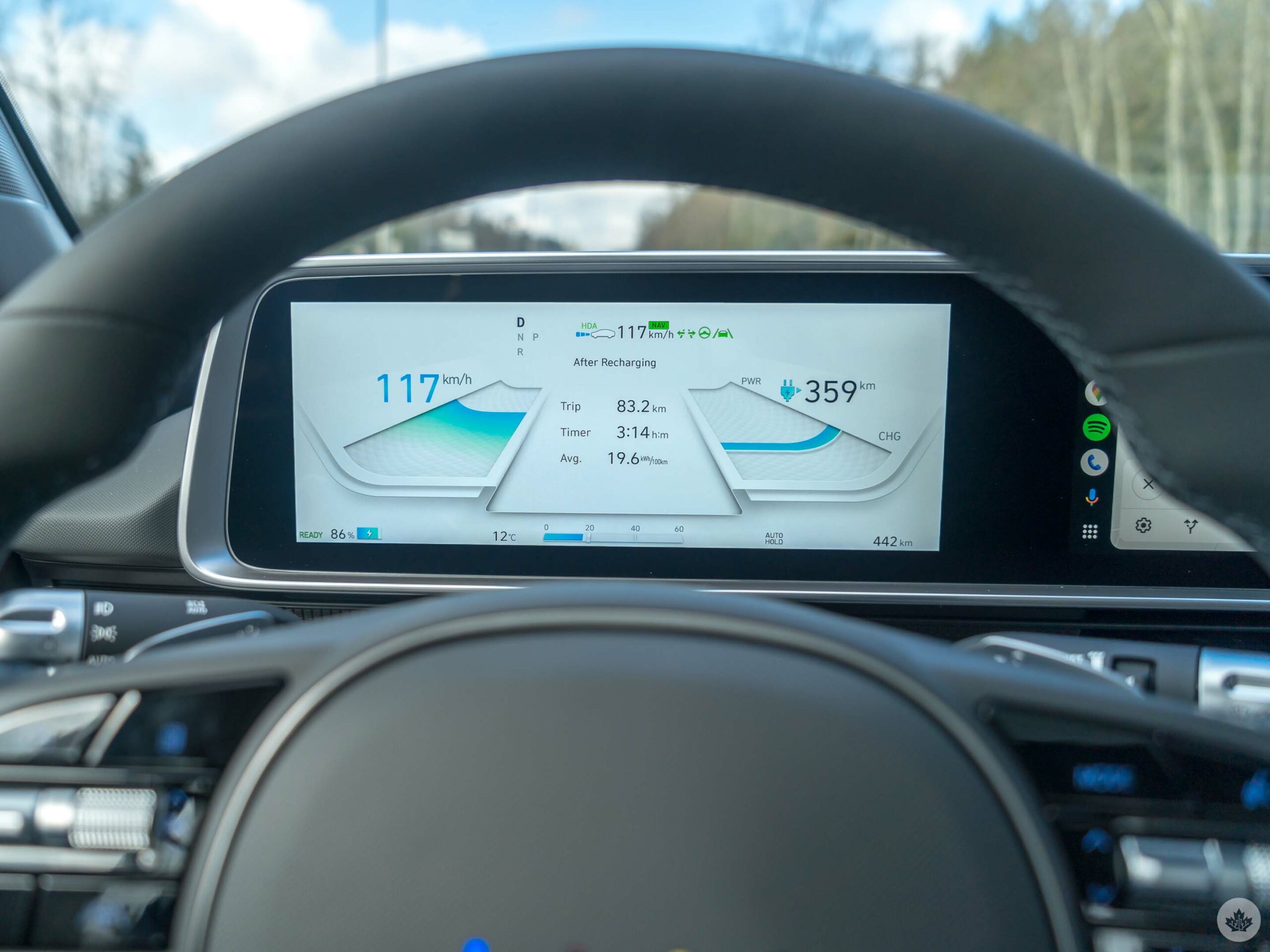

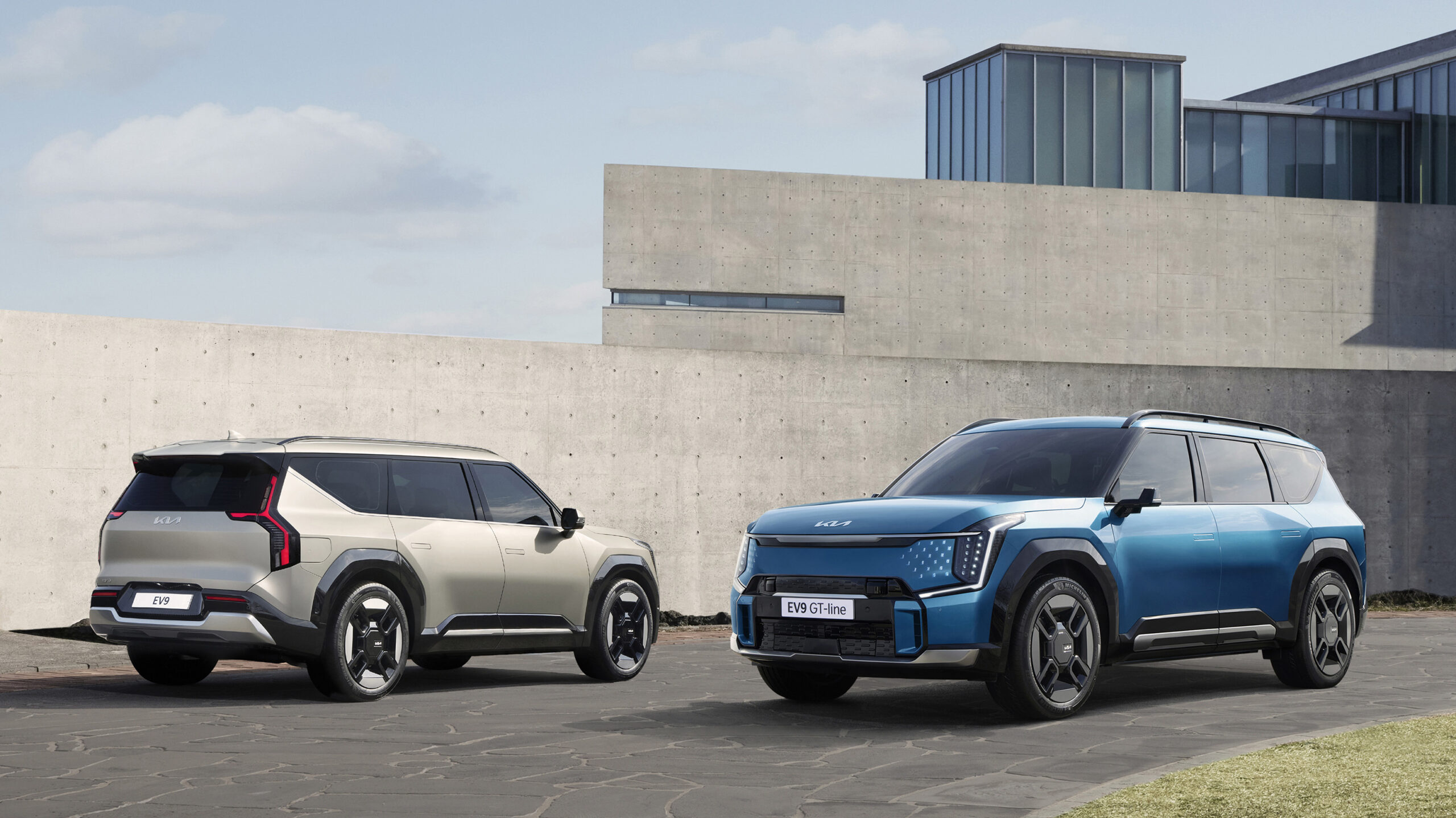 Regarding range, Kia claims the RWD Long Range EV9 with a 99.8kWh battery can hit 540km (336 miles). The car will also be available in an AWD variant with a 99.8kWh battery and a standard 76.1kWh RWD base-level range version. Other notable specs include 0-99km (o-62 miles) in 9.2 seconds with the RWD Long Range 150kW motor and 8.2 seconds with the 160kW monitor in the Standard Range configuration. Finally, the AWD model with dual-motor 283kW power can hit 99km in six seconds.
Regarding range, Kia claims the RWD Long Range EV9 with a 99.8kWh battery can hit 540km (336 miles). The car will also be available in an AWD variant with a 99.8kWh battery and a standard 76.1kWh RWD base-level range version. Other notable specs include 0-99km (o-62 miles) in 9.2 seconds with the RWD Long Range 150kW motor and 8.2 seconds with the 160kW monitor in the Standard Range configuration. Finally, the AWD model with dual-motor 283kW power can hit 99km in six seconds.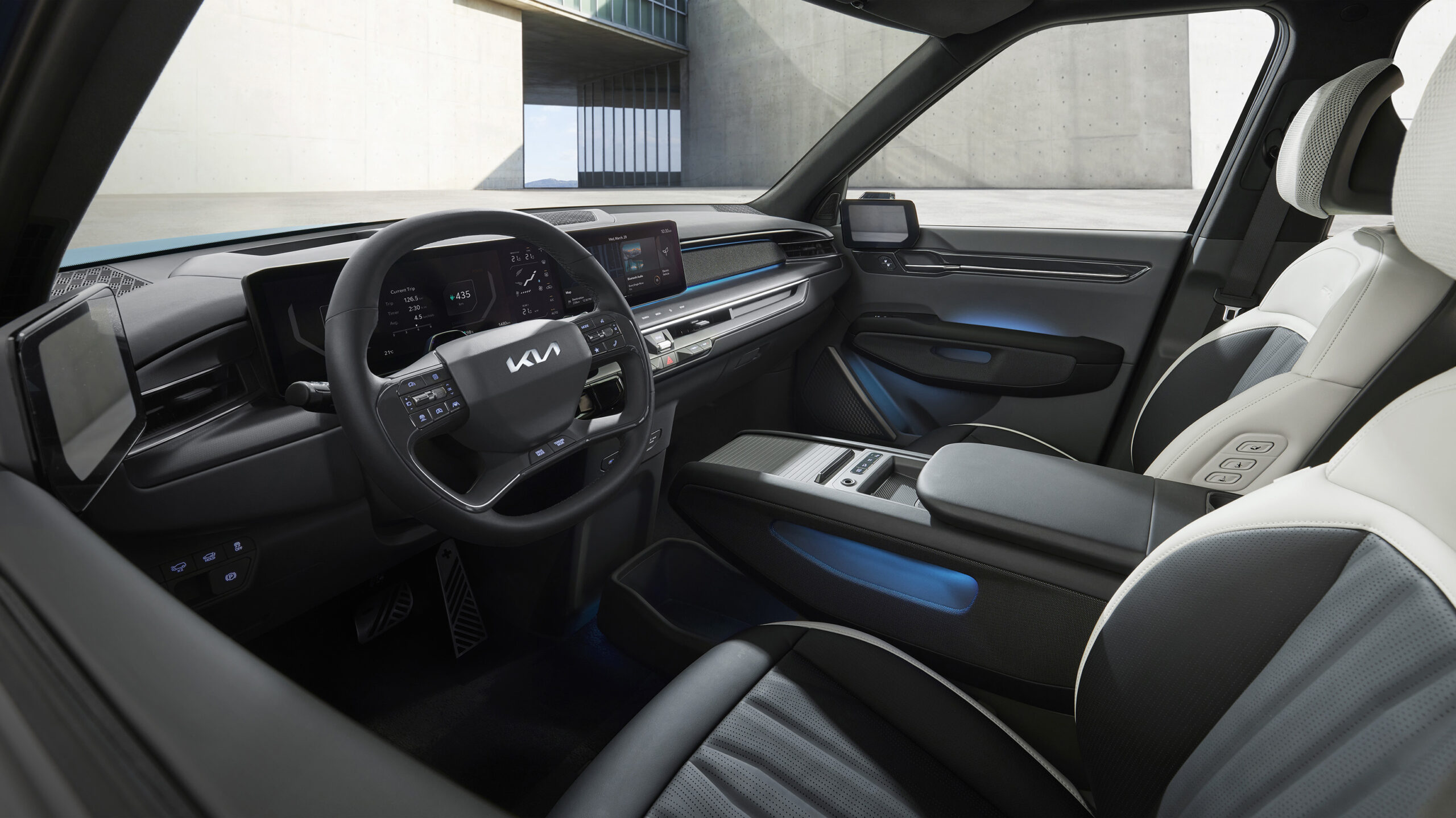 It’s unclear how much the EV9 will cost in Canada, but EV is expected to release in some regions towards the second half of the year. In other electric vehicle-related news, Hyundai recently confirmed that its upcoming
It’s unclear how much the EV9 will cost in Canada, but EV is expected to release in some regions towards the second half of the year. In other electric vehicle-related news, Hyundai recently confirmed that its upcoming






